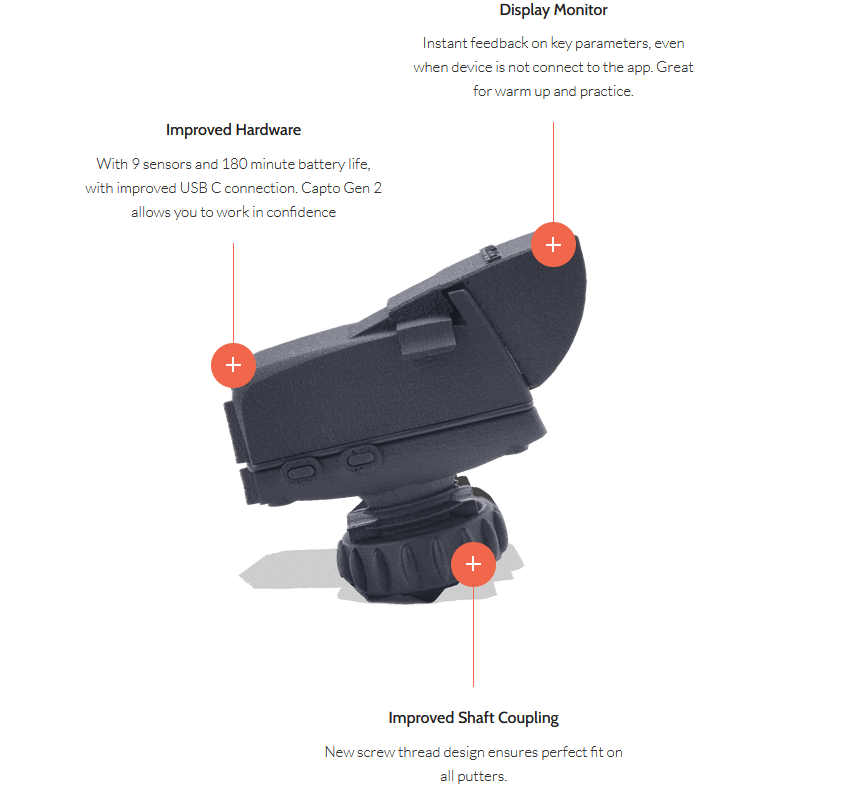

- #Capto putting system how to
- #Capto putting system software
In October 2011, Litecoin was released which used scrypt as its hash function instead of SHA-256. In April 2011, Namecoin was created as an attempt at forming a decentralized DNS. It used SHA-256, a cryptographic hash function, in its proof-of-work scheme. In January 2009, Bitcoin was created by pseudonymous developer Satoshi Nakamoto. Like Bitcoin and other cryptocurrencies that would follow it, bit gold (not to be confused with the later gold-based exchange BitGold) was described as an electronic currency system which required users to complete a proof of work function with solutions being cryptographically put together and published. Shortly thereafter, Nick Szabo described bit gold. In 1998, Wei Dai described "b-money", an anonymous, distributed electronic cash system. In the 1997 book The Sovereign Individual, the authors, William Rees-Mogg and James Dale Davidson, predict that the currency used in the information age would be using "mathematical algorithms that have no physical existence", which has led some in the cryptocurrency community to call the book's claim a "prophecy". The paper was first published in an MIT mailing list and later in 1997 in The American Law Review.
#Capto putting system how to
In 1996, the National Security Agency published a paper entitled How to Make a Mint: the Cryptography of Anonymous Electronic Cash, describing a cryptocurrency system. This allowed the digital currency to be untraceable by a third party.
#Capto putting system software
Digicash required user software in order to withdraw notes from a bank and designate specific encrypted keys before it can be sent to a recipient. Later, in 1995, he implemented it through Digicash, an early form of cryptographic electronic payments.


In 1983, American cryptographer David Chaum conceived of a type of cryptographic electronic money called ecash.
7.3 The legal concern of an unregulated global economy. As of March 2022 there were more than 9,000 other cryptocurrencies in the marketplace, of which more than 70 had a market capitalization exceeding $1 billion. The first decentralized cryptocurrency was Bitcoin, which first released as open-source software in 2009. Traditional asset classes like currencies, commodities, and stocks, as well as macroeconomic factors, have modest exposures to cryptocurrency returns. When implemented with decentralized control, each cryptocurrency works through distributed ledger technology, typically a blockchain, that serves as a public financial transaction database. When a cryptocurrency is minted or created prior to issuance or issued by a single issuer, it is generally considered centralized. Cryptocurrencies typically use decentralized control as opposed to a central bank digital currency (CBDC). Ĭryptocurrency does not exist in physical form (like paper money) and is typically not issued by a central authority. Generally, these token stakers get additional ownership in the token over time via network fees, newly minted tokens or other such reward mechanisms. In return, they get authority over the token in proportion to the amount they stake. In a proof-of-stake model, owners put up their tokens as collateral. Some crypto schemes use validators to maintain the cryptocurrency. Despite their name, cryptocurrencies are not considered to be currencies in the traditional sense and while varying treatments have been applied to them, including classification as commodities, securities, as well as currencies, cryptocurrencies are generally viewed as a distinct asset class in practice. Individual coin ownership records are stored in a digital ledger, which is a computerized database using strong cryptography to secure transaction records, to control the creation of additional coins, and to verify the transfer of coin ownership. It is a decentralized system for verifying that the parties to a transaction have the money they claim to have, eliminating the need for traditional intermediaries, such as banks, when funds are being transferred between two entities. : 18Ī cryptocurrency, crypto-currency, or crypto is a digital currency designed to work as a medium of exchange through a computer network that is not reliant on any central authority, such as a government or bank, to uphold or maintain it. 
This note has been interpreted as a comment on the instability caused by fractional-reserve banking. The genesis block of Bitcoin's blockchain, with a note containing The Times newspaper headline.








 0 kommentar(er)
0 kommentar(er)
